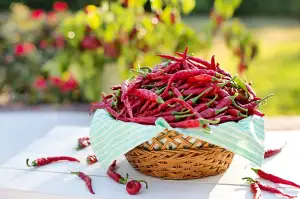Stew vs Soup: Unraveling the Delicious Distinctions in the Culinary World

In the vast and diverse world of culinary delights, there are two dishes that often confuse food enthusiasts: stew and soup. While both are comforting and delicious, they possess distinct characteristics that set them apart. Understanding the differences between these two beloved dishes can enhance our appreciation for their unique qualities and help us navigate the culinary landscape with confidence. Join us as we unravel the delicious distinctions between stews and soups, exploring their ingredients, preparation methods, textures, flavors, nutritional values, cultural variations, and more. Prepare to embark on a flavorful journey where food lovers gather and share their passion for all things culinary.
Definition of stew and soup
Stew and soup are two beloved dishes that have been enjoyed by food lovers for centuries. While they may seem similar at first glance, there are distinct differences that set them apart.
A stew is a hearty dish typically made with chunks of meat and vegetables cooked in a flavorful liquid. The ingredients are usually simmered slowly over low heat for an extended period of time, allowing the flavors to meld together. Stews often have a thick and rich consistency, with the meat becoming tender and the vegetables softening.
On the other hand, soup is a more liquid-based dish that can be made with a variety of ingredients such as vegetables, meat, seafood, or grains. It is typically cooked in a broth or stock and can be served hot or cold. Soups can range from thin and light to thick and creamy depending on the ingredients used and the cooking method employed.
While both stew and soup involve cooking ingredients in liquid, it is the ratio of solids to liquids that distinguishes them. Stews have less liquid compared to their solid components, resulting in a heartier and more substantial dish. Soups, on the other hand, have more liquid content which gives them a lighter and more fluid consistency.
In summary, stews are characterized by their chunky texture and rich flavors while soups tend to be thinner and more versatile in terms of ingredients used. Understanding these definitions will help us appreciate the unique qualities each dish brings to our culinary world.
Ingredients and preparation
When it comes to ingredients and preparation, both stews and soups offer a wide range of possibilities. Stews typically include chunks of meat, poultry, or fish as the main ingredient. These are often browned before being simmered in a flavorful liquid, along with vegetables like carrots, potatoes, and onions. Stews are known for their hearty nature and tend to be thicker in consistency.
On the other hand, soups can be made with various ingredients such as vegetables, legumes, grains, or even fruits. They are usually cooked by simmering these ingredients in a liquid base like broth or stock. Soups can be creamy or clear, depending on whether they are pureed or strained. The versatility of soups allows for endless combinations of flavors and textures.
In terms of preparation, stews require longer cooking times to allow the flavors to meld together and the meat to become tender. This slow cooking process allows for rich and complex flavors to develop. Soups, on the other hand, can be prepared relatively quickly and are often served as a light meal or appetizer.
Whether you prefer the heartiness of a stew or the versatility of a soup, both dishes offer a delicious way to enjoy a variety of ingredients in one pot.
Cooking method
Cooking method plays a crucial role in distinguishing between stew and soup. Stews are typically cooked slowly over low heat for an extended period of time, allowing the flavors to meld together and the meat to become tender. This slow cooking process allows the ingredients to break down and release their natural juices, creating a rich and flavorful broth. On the other hand, soups are usually cooked relatively quickly, with the ingredients simmered or boiled in liquid until they are cooked through. The shorter cooking time results in a lighter broth and more distinct flavors of the individual ingredients. While both methods result in delicious dishes, it is the difference in cooking time that sets stew apart from soup.
Texture and consistency
Texture and consistency play a crucial role in distinguishing between a stew and a soup. Stews are known for their thick, hearty texture, while soups tend to be thinner and more liquid in consistency. Stews are often made by simmering ingredients in a flavorful liquid until they become tender and the liquid reduces, resulting in a rich, velvety texture. The longer cooking time allows the flavors to meld together, creating a deeply satisfying dish. On the other hand, soups are typically made by combining ingredients with a larger quantity of liquid, which is then cooked until all the flavors meld together. This results in a lighter, broth-like consistency that is perfect for sipping or slurping. Whether you prefer the comforting thickness of a stew or the lighter consistency of a soup, both offer unique textures that enhance the overall dining experience.
Serving and presentation
When it comes to serving and presentation, stews and soups have their own distinct styles. Stews are typically served in deep bowls or plates, allowing for the generous portions of meat, vegetables, and thick broth to be showcased. The hearty nature of stews often calls for a rustic presentation, with chunks of ingredients visible and the rich sauce drizzled over the top.
On the other hand, soups are usually served in shallow bowls or cups. The focus here is on the liquid base, which may be clear or creamy. Soups can be garnished with herbs, croutons, or a swirl of cream to add visual appeal. The presentation of soups is often more delicate and elegant compared to stews.
Both stews and soups can be accompanied by bread or other side dishes. However, stews tend to pair well with crusty bread or rice that can soak up the flavorful sauce, while soups are often enjoyed with crackers or a light salad on the side.
Ultimately, whether you prefer the comforting heartiness of a stew or the refined elegance of a soup, both dishes offer unique serving and presentation options that enhance the overall dining experience.
Flavor profiles
Flavor profiles play a crucial role in distinguishing stews from soups. Stews are known for their rich and robust flavors, often achieved by slow cooking meat or vegetables in a flavorful broth or sauce. The long cooking time allows the flavors to meld together, resulting in a deep and complex taste. Soups, on the other hand, tend to have lighter and more delicate flavors. They are often made with a variety of ingredients such as vegetables, herbs, and spices, which impart a subtle and harmonious taste. Whether it's the hearty depth of a beef stew or the delicate balance of flavors in a chicken noodle soup, each dish offers its own unique and satisfying taste experience.
Nutritional differences
Nutritional differences between stew and soup are worth exploring, as they offer distinct advantages. Stews tend to be heartier and more filling due to their higher protein content. The slow-cooking process of stews allows for the breakdown of tougher cuts of meat, resulting in a rich source of protein. Additionally, stews often contain a variety of vegetables, providing essential vitamins and minerals.
On the other hand, soups are generally lighter and lower in calories compared to stews. They often incorporate a larger amount of broth or stock, which contributes to their lower calorie count. Soups also offer the opportunity to include a wider range of vegetables and legumes, increasing their fiber content.
Both stew and soup can be nutritious options depending on the ingredients used. However, it is important to consider portion sizes and additional ingredients such as cream or butter that may increase the calorie content. Ultimately, incorporating both stews and soups into your diet can provide a well-rounded nutritional balance.
Cultural variations
Cultural variations play a significant role in the distinctions between stews and soups. Different cuisines around the world have their own unique interpretations of these dishes. For example, in French cuisine, a classic beef stew known as "boeuf bourguignon" is slow-cooked with red wine and served with crusty bread. In contrast, Italian cuisine offers a hearty minestrone soup filled with vegetables, beans, and pasta.
In Asian cultures, stews and soups take on diverse forms. Korean cuisine features the famous spicy kimchi jjigae stew made with fermented cabbage and pork. On the other hand, Japanese cuisine showcases delicate miso soup made from fermented soybean paste, tofu, and seaweed.
In African cuisine, stews are often rich and flavorful. The West African peanut stew incorporates ingredients like peanuts, tomatoes, and various meats or vegetables. Meanwhile, Moroccan cuisine offers tagine - a slow-cooked stew typically made with meat or fish along with aromatic spices like cumin and cinnamon.
These cultural variations highlight how stews and soups reflect the culinary traditions and preferences of different regions. Exploring these diverse interpretations allows us to appreciate the global richness of flavors found within these beloved dishes.
In conclusion, while both stew and soup are delicious culinary creations, they have distinct differences that set them apart. Stews are hearty and thick, with chunks of meat and vegetables cooked slowly to create a rich and flavorful dish. Soups, on the other hand, are lighter in texture and often include a variety of ingredients that are simmered together to create a harmonious blend of flavors.
The cooking methods for stews and soups also differ, with stews requiring longer cooking times to tenderize the meat and develop deep flavors. Soups can be made quickly by simmering ingredients for a shorter period.
Texture-wise, stews have a thicker consistency due to the use of flour or starches for thickening. Soups tend to be thinner and more liquid in nature.
When it comes to serving and presentation, stews are often served as a main course in a bowl or on a plate accompanied by bread or rice. Soups can be served as an appetizer or main course, often garnished with herbs or croutons.
Flavor profiles vary greatly between stews and soups. Stews tend to have bold, robust flavors from long cooking times and the melding of ingredients. Soups can range from light and refreshing to savory or spicy depending on the recipe.
Nutritionally speaking, stews are often higher in calories due to the use of meats and additional fats for flavor. Soups can be lighter in calories depending on the ingredients used.
Lastly, cultural variations play a role in how stews and soups are prepared around the world. Each country has its own unique recipes and techniques that contribute to the overall culinary landscape.
In summary, whether you prefer the heartiness of a stew or the lightness of a soup, both offer delightful dining experiences. Understanding their distinctions allows us to appreciate their individual characteristics while exploring new flavors from different cultures. So next time you're craving comfort food, consider the distinctions between stews and soups and choose accordingly.
Published: 30. 11. 2023
Category: Food



